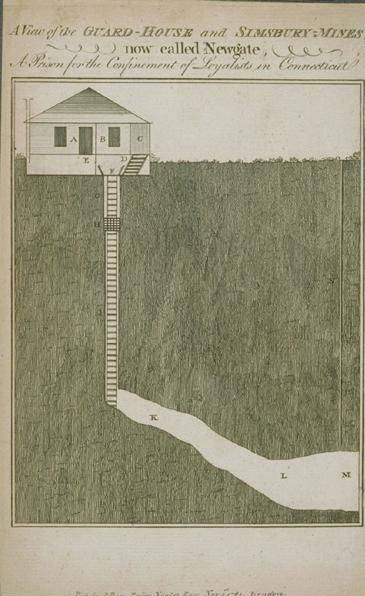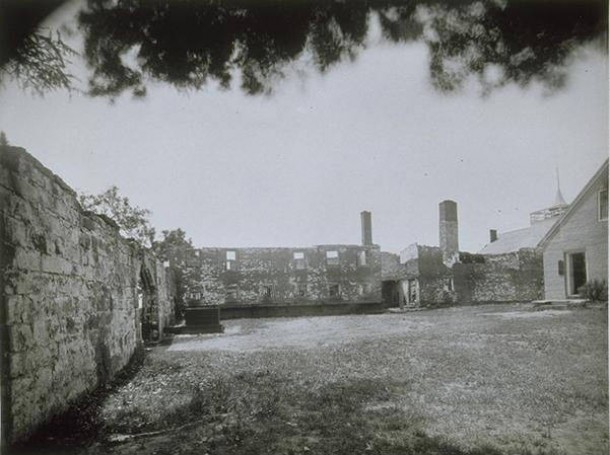
A view of the guard house and mines, East Granby, 1781 – Connecticut Historical Society
On December 22, 1773, John Hinson, the state’s first inmate, arrived at New-Gate Prison. Ironically only 18 days later Hinson, the first person to be imprisoned, also became the first to escape. Sentenced to 10 years for burglary, the 20-year-old Hinson was held underground in an old copper mine in Simsbury, now East Granby. At the time corporal punishment for breaking the law included whipping, the cropping of ears, or branding with a hot iron; so, isolation from society, accompanied by work in the mine, was seen as a more humane alternative. The state’s General Assembly passed an act earlier in the year outlining the terms of imprisonment: a first offense for burglary, robbery, and counterfeiting earned a term not to exceed 10 years while a second offense resulted in life imprisonment.
The Colony of Connecticut chose the mine as a prison site because of its remote location and the security afforded by its two vertical shafts. The first, 25-feet deep, could be accessed only by the ladder attached to its wall and was secured with a grate at the entrance. The other shaft, at 67-feet deep, offered no ready means of access so prison overseers deemed additional security unnecessary. At the time of Hinson’s confinement little had been done to improve the mine except the addition of a 16-foot-wide room at the bottom of the shorter shaft and a small wooden lodge at the top. Aided by an accomplice, rumored to have been a woman, Hinson escaped on January 9 by means of a simple rope lowered down the deeper shaft.









